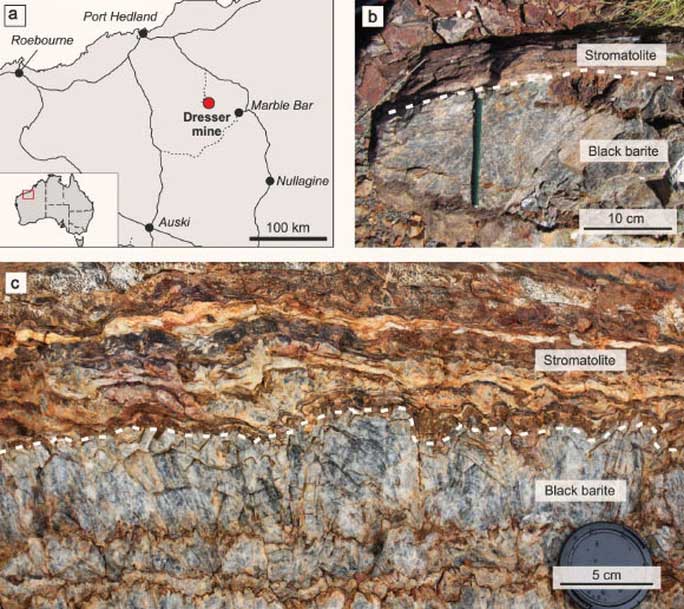Marble Bar, a landmark associated with quartz mines in Australia, has provided the scientific community with a unique stone slab: containing 3.5 billion-year-old primitive organic molecules , the source of life for living things. Earth’s most primitive objects.
 Close-up of a precious stone unearthed in Australia – (Photo: Nature Communications).
Close-up of a precious stone unearthed in Australia – (Photo: Nature Communications).
According to Sci-News , the rock was excavated from the Dresser mine, belonging to the Dresser Formation of Marble Bar. According to Dr. Helge Mißbach from the University of Cologne (Germany), the study’s lead author, this is valuable direct evidence for the hypothesis that primitive life uses small organic molecules in rocks as life energy. , in the middle of a primitive Earth that did not have the sources of life like today.
These organic molecules become trapped as liquid inside the mineral barite – which is often associated with ancient microbial mats. Analysis based on gas chromatography – mass spectrometry, microthermal measurement, petrography, stable isotope analysis… shows that it contains various compounds such as hydrogen sulfide (H 2 S), carbonyl sulfide ( COS), carbon disufide (CS 2 ), methane (CH 4 ), acetic acid, organic sulfans and thiols.
These compounds are both the origin of microorganisms and the products arising from the life of previous microorganisms. It can be said that in order to survive on an empty Earth, these primitive creatures had to go through a constantly “recycled” habitat.
In addition, the unique liquid in this rock also contains many agents believed to be the origin of life.
The research was just published in the journal Nature Communications.





